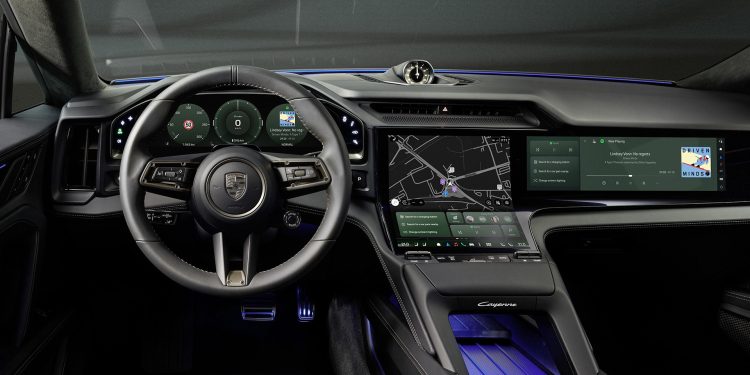Porsche Cayenne Electric: Interior and Technology
Words NZ Autocar | Images AutoExpress, Porsche
Porsche has revealed interior details of the upcoming Cayenne Electric. Central to the cabin is the new ‘Flow Display’, a touchscreen that curves at its base to integrate with the centre console.
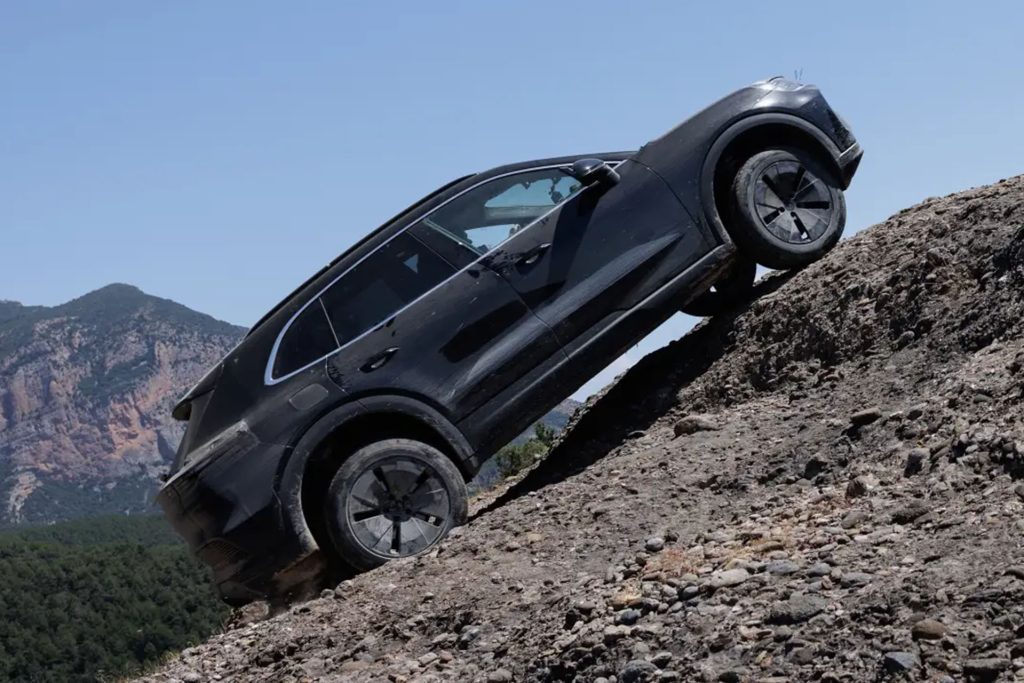
This is complemented by an optional 14.9-inch passenger screen, creating a wide span of digital displays across the dashboard. The system allows for customisation, with navigation, media, and phone functions alongside configurable areas.
The Flow Display also integrates air-conditioning controls, though physical knobs for temperature and fan speed remain, alongside a volume knob. A palm-rest beneath the display is designed for simplicity of use, and the console also incorporates storage and a wireless charging pad.
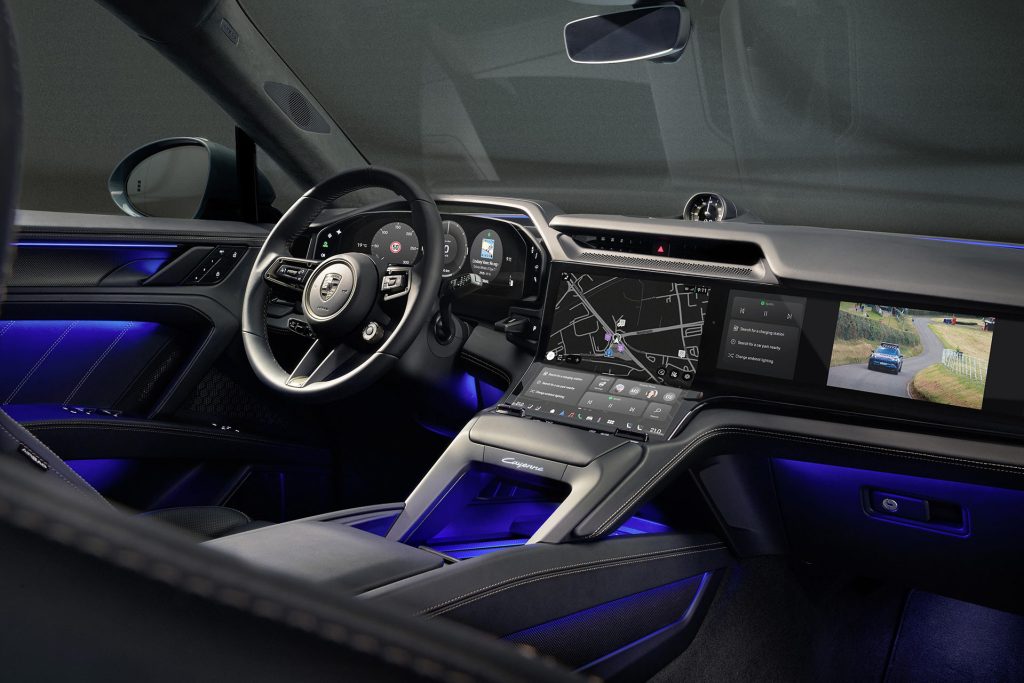
In front of the driver sits a curved 14.5-inch display with touch-sensitive edges for chassis, lighting, suspension, and camera controls. A new augmented reality heads-up display projects directional information across up to 2.2m of space, overlaying instructions directly on the road ahead.
Other luxury features include an electrically adjustable second-row seat-back, heated armrests, and a panoramic roof with electrochromic panels. Ambient lighting integrates with screen graphics, while there are a number of new interior colour options.
Exterior Design
Proportions for the Cayenne Electric lie between those of the Macan EV and the existing Cayenne. It features a shorter bonnet, upright body, and longer wheelbase with shorter overhangs, creating a balanced stance without significantly increasing length.
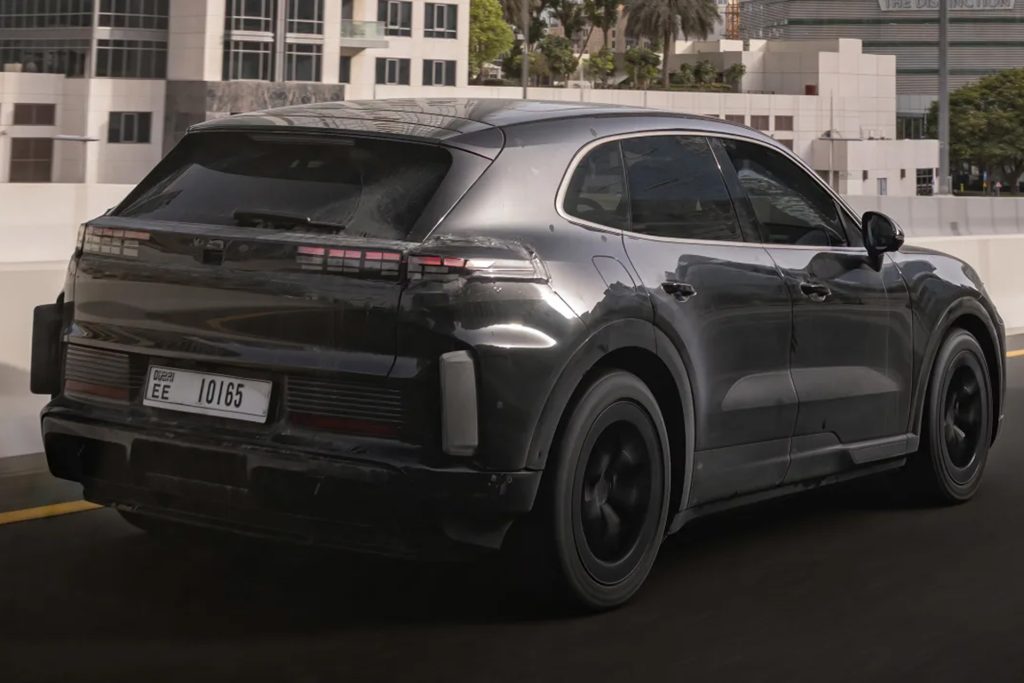
The front end integrates all lighting units into high-mount headlights, with active grille shutters in the lower fascia for added aerodynamic efficiency. At the rear, Porsche has redesigned the light bar for a more 3D appearance.

Design measures include contrasting bumpers and wheel arch trim in matte or gloss finishes depending on specification. Frameless windows feature, while wheel sizes range from 20 to 23 inches. Higher-performance Turbo versions will feature larger intakes and more aggressive styling. A Coupe body style will also be offered alongside the SUV.
Powertrain and Performance
The Cayenne Electric uses Porsche’s 800V PPE platform, shared with the Macan EV, but adds new suspension technologies. High-spec models will include Porsche’s Active Ride Control system, each wheel operating independently for both comfort and handling. Additional features such as rear-wheel steering, air suspension, and torque vectoring are also planned.
Most versions will use a dual-motor set-up. Battery size has not been confirmed but is expected to exceed the Macan’s 100kWh capacity. Power output will kick off around 300kW and rise to 670kW in Turbo models, positioning the SUV against key German rivals.
Towing capacity is up to 3.5 tonnes.
Development and Testing
Digital simulations, including “digitised routes” of real-world environments, have replaced much of the early prototype work, reducing development time by 20 per cent.
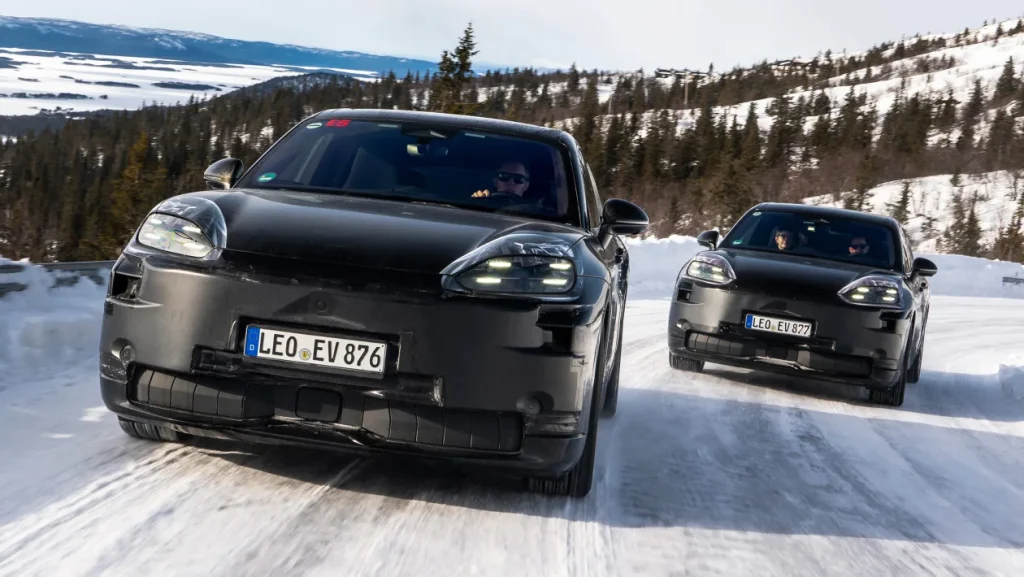
Despite digital advances, Porsche continues extensive real-world testing in extreme climates such as Death Valley and Scandinavia. Engineers and test drivers ensure refinement beyond what simulations can capture.
Charging Technology
The Cayenne Electric will debut wireless charging for its main battery. A floor plate installed at home allows inductive charging at up to 11kW, with efficiency claimed at 90 per cent. The SUV lowers itself to minimise the gap between the pad and battery. Safety features stop charging if an object or animal obstructs the plate.
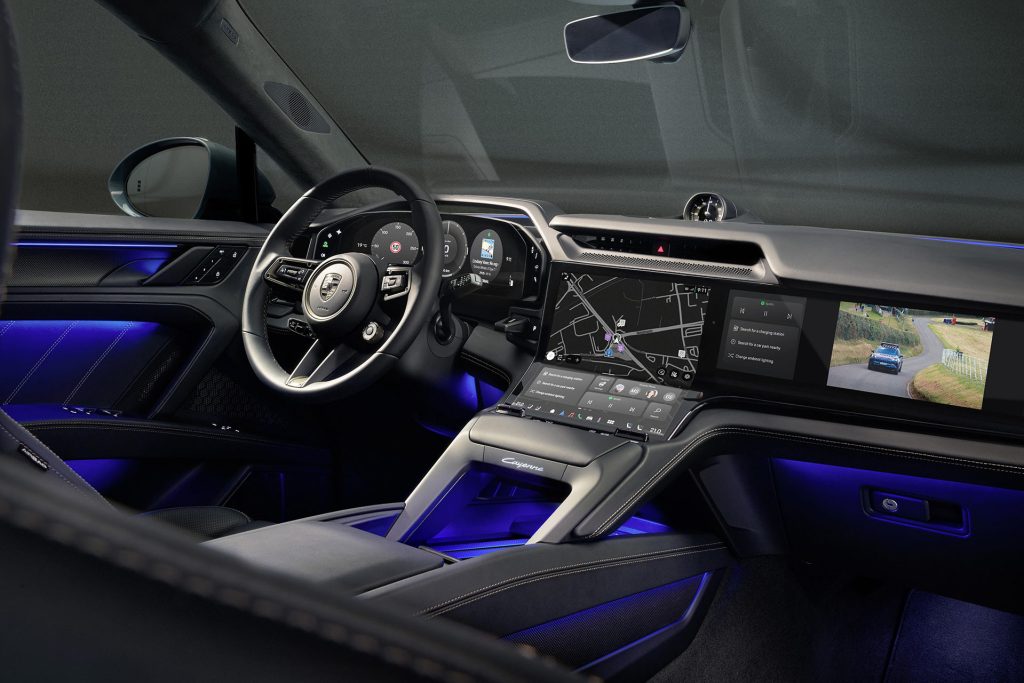
While wireless charging offers convenience, it is slower than rapid charging, which supports up to 400kW. This allows a 10–80 per cent charge in 15 minutes for the Cayenne’s 112kWh battery.
Market Position
The Cayenne Electric will launch towards the end of this year, offered in SUV and Coupe variants. Pricing is expected to kick off around the equivalent $NZ230k mark. However, the EV will not replace the existing ICE Cayenne, instead joining it in Porsche’s line-up. Entry-level 4 models and high-performance Turbo versions will provide variety in both performance and styling.


